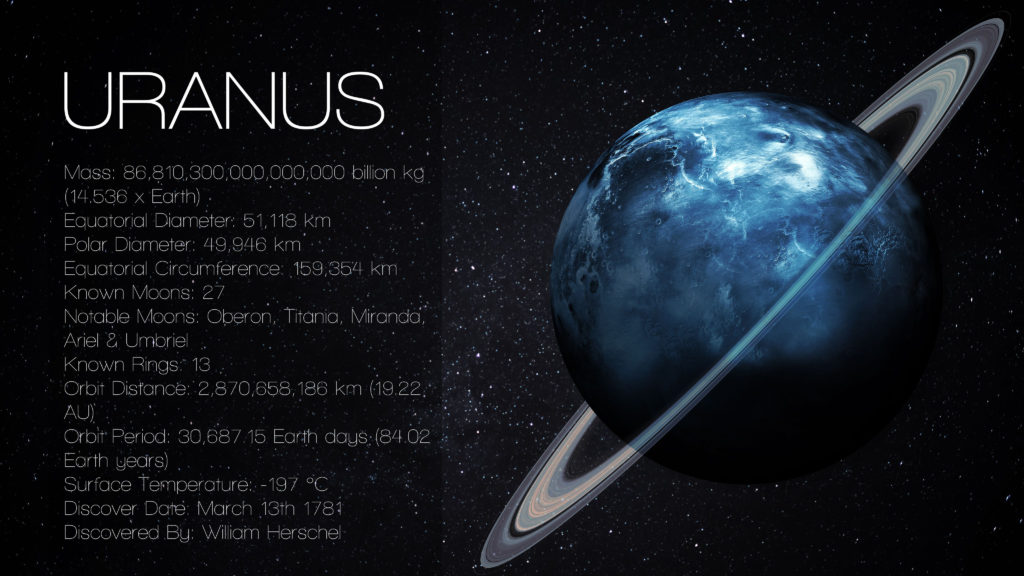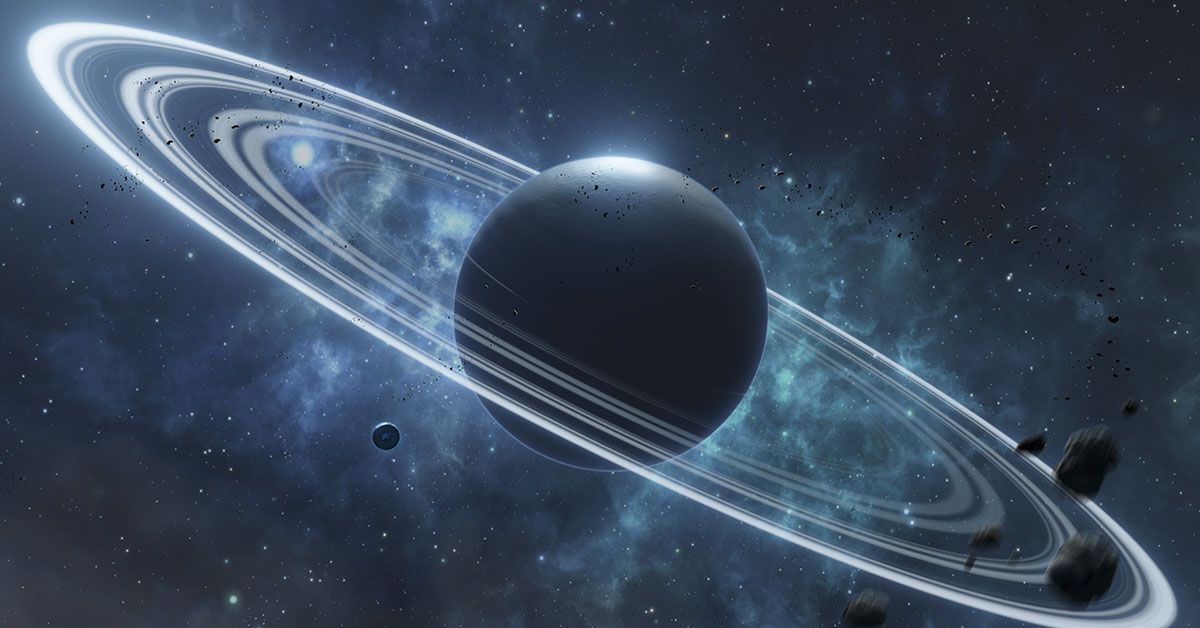Uranus was the first planet discovered with a telescope but many secrets surround this tilting planet with its thin rings and 27 moons. But this year, it was selected as a top target for further exploration. NASA plans to launch a new probe to this ice giant in the 2030s. Only one spacecraft has ever reached Uranus, the Voyager 2 probe. It launched from Earth in 1977 and reached the planet in 1986. The mission discovered two new rings, 10 new moons, and a magnetic field stronger than the one on Saturn. But NASA expects to learn a lot more the second time around. [1]
NASA May Send Orbiter and Probe to Uranus
Planetary scientists set priorities for the next decade in a 2022 decadal survey, where they decided a mission to Uranus is a top science goal. The decadal survey, led by the National Academy of Sciences, highlighted a mission concept they called the Uranus Orbiter and Probe (UOP). The scientists called the planet “one of the most intriguing bodies in the solar system” and determined launch opportunities for a 12 or 13 year cruise to go out in the early 2030s. “When I first read that recommendation, I feared I might be dreaming!” Leigh Fletcher, a planetary scientist at the University of Leicester who participated in the decadal survey process. “This decadal survey prioritization is a wonderful leap forward for the outer solar system community.” [2]

Read: Scientists baffled as Earth spins faster than usual – making days shorter
Right now, the UOP isn’t a mission name, just a concept. The previous decadal survey in 2011 touched upon the UOP as a third priority for a flagship mission that didn’t yet happen. Reports since then explained the importance of a fully-equipped Uranus orbiter with a probe to go underneath the planet’s clouds, along with options for appropriate spacecraft. So it’s a no-brainer that Uranus is now the priority.
“A flagship mission to the Uranian system will provide an incredible opportunity to explore how ice giant systems, which are common in the galaxy, formed and evolved,” said Chloe Beddingfield, a planetary scientist and astronomer at NASA’sAmes Research Center. Additionally, she believes exoplanet science could be explored on the planet, a topic that must’ve contributed to UOP’s prioritization.
To Explore a New Side of the Planet
The Uranus Orbiter and Probe mission itself will cost around $4.2 billion, according to initial estimations. Some scientists petition for a more affordable concept that would cost under $900 million, making it a “New Frontiers” mission, to ensure the UOP actually works out. But not all agree with minimizing the endeavor. “A New-Frontiers level mission could only just scratch the surface, unable to explore the full ice giant system in all its rich diversity,” Fletcher said. “To fully explore Uranus we need to be in orbit, exploring the interior, atmosphere, and magnetosphere, and touring the myriad icy moons and rings. If it’s worth doing, then it’s worth doing properly!”

Either way, sending a spacecraft to Uranus is a long-term experiment. If the mission launches in 2031 or 2032, the craft could receive a gravity-assist from Jupiter and arrive on Uranus in 2044 or 2045. However, if the mission launches around 2038, it could take 15 years to reach the ice giant. But scientists are eager to reach Uranus by 2045 for another reason. Keep in mind, one year on the planet is equal to 84 years on Earth. Since Voyager 2 flew by during the southern hemisphere’s summer, the UOP needs to arrive before the southern spring in 2049 to receive information that contrasts the 1977 mission. It will also provide entirely new views of the southern hemispheres of the planet’s moons.
Read: 50 Years Ago NASA Sent a Map Into Space to Help Aliens Find Earth—Now They’ve Got An Awesome Update
To Investigate 27 Moons
Uranus’s moons are worthy of their own exploration. While the planet has 27 moons, scientists believe the five largest ones (Oberon, Ariel, Miranda, Titania, and Umbriel) are ocean worlds that may maintain life.
“Investigation of these moons would enhance our knowledge of where potentially habitable bodies exist in our solar system,” Beddingfield said.
However, scientists believe that Uranus itself is not conducive to life due to its extreme and volatile temperatures and pressures. For one thing, it doesn’t have a true surface, only cold and swirling fluids, which earned its distinction as an ice giant. But a spacecraft cannot land there or fly through the atmosphere, which is extreme enough to destroy it. Hence came the concept of the Uranus Orbiter and Probe. [3]
Unlike the Earth’s moon, these are not covered in craters; so they may be geographically active, possibly due to ice volcanoes. The Voyager 2’s flyby briefly captured photos of the moons’ surfaces; they showed evidence for geologic activity especially on Ariel and Miranda. “However, the northern hemispheres of the Uranian moons were shrouded by winter darkness at the time of the flyby and were largely unimaged, leaving many unanswered questions about the origin and evolution of these icy bodies,” said Richard Cartwright. He’s a planetary scientist and astronomer at NASA’s Ames Research Center.
However, the mission isn’t a reality. It is still only a concept, although scientists are already debating names for the orbiter and probe. Perhaps from mythology, perhaps fittingly “Shakespeare” for the orbiter and “Pope” for the atmospheric probe. “There are many hurdles to come — political, financial, technical — so we’re under no illusion,” Fletcher said. “We have about a decade to go from a paper mission to hardware in a launch fairing. There’s no time to lose.”
Keep Reading: The deepest view of the unseen universe ever captured: NASA releases first images from new space telescope
Sources
- “Uranus: Facts about the sideways ice giant.” Live Science. Adam Mann. May 13, 2022
- “Uranus by 2049: Here’s why scientists want NASA to send a flagship mission to the strange planet.” Space. Jamie Carter. April 21, 2022
- “Uranus.” NASA: Solar System Exploration. Updated: September 20, 2021

